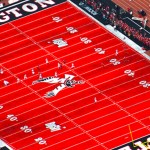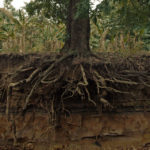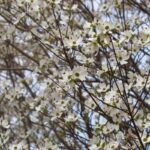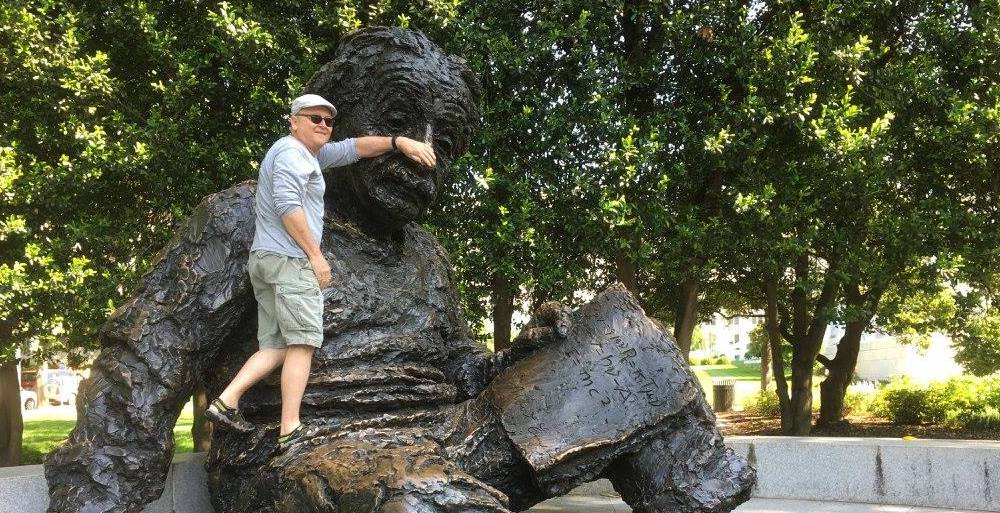
As the Coronavirus spreads and Americans recoil from physical contact, it is ending a quirky tradition: touching statues for luck.
It isn’t known exactly how long the virus will live on surfaces, but it can lurk there, depending on the surface material and other factors. According to the World Health Organization, coronaviruses may survive on surfaces for just a few hours or several days, although many factors will influence this, including surface material and weather.
The Centers for Disease Control and Prevention recommends that you wash your hands and wipe down hard surfaces such as doorknobs and stair rails with disinfectants. You could also stop touching things you don’t need to touch — such as statues. That age-old tradition of rubbing monuments for good luck no longer sounds cute.
Here are 10 statues you should stop touching for luck:
1. Einstein’s nose, Washington, D.C.
If you rub the nose of Albert Einstein’s statue in Washington, D.C., some of his genius will rub off on you, or so the rumor goes. Visitors touch his nose so often that it has a bright shine.
Einstein earned the Nobel Prize in physics in 1921, but as we approach its 100th anniversary, stop rubbing his nose. Science says so.
2. Wall Street Bull, Wall Street, New York, N.Y.
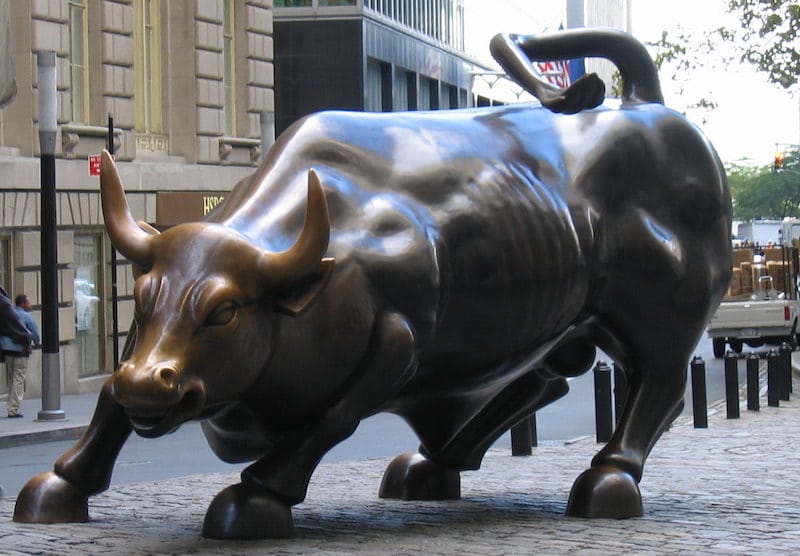
They say that every time a stockbroker touches the bronze testicles of the Charging Bull, a bell rings. Not really, but the bull does have a following.
A symbol of money and power, the Charging Bull statue, is located in New York City’s financial district. Sculptor Arturo di Modica created the statue to symbolize the city’s spirit, “where people from all over the world could come regardless of their origin or circumstances, and through determination and hard work overcome every obstacle to become successful.”
Tourists, stockbrokers and businesspeople rub the horns, nose and the jewels of the charging bull for good luck, but some say they are just delightfully touchable.
3. Abraham Lincoln’s Tomb, Springfield, Ill.
It’s a grade school tradition for kids in Illinois: visiting Lincoln’s Tomb in Springfield. Another 200,000 tourists see it every year, making it the second-most-visited cemetery in the country, behind only Arlington. Lincoln’s bronze bust was added in the 1930s. Rubbing the 16th president’s oversized nose is said to bring good luck, and looking him in the eye while rubbing it makes you powerful. Or so the folklore says.
But think about it. Thousands of germy school children, putting their hands on the great man’s schnozz? You’re better off memorizing the Gettysburg Address. Honest.
4. Crazy Girls Sculpture, Las Vegas
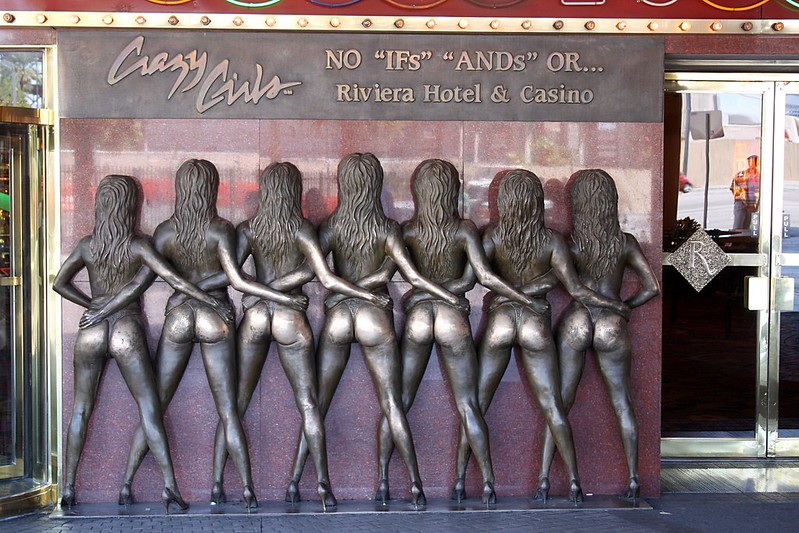
This rated-R-for-racy sculpture features the backsides of the Crazy Girls showgirl revue that was featured in the Riviera Hotel-Casino for 27 years until 2015. The sculpture now rests at Planet Hollywood Hotel-Casino and is touted as the most-photographed sculpture in Las Vegas. So many sought luck by touching the behinds that the patina has been rubbed off the dancers’ posteriors.
5. John Harvard statue, Cambridge, Mass.
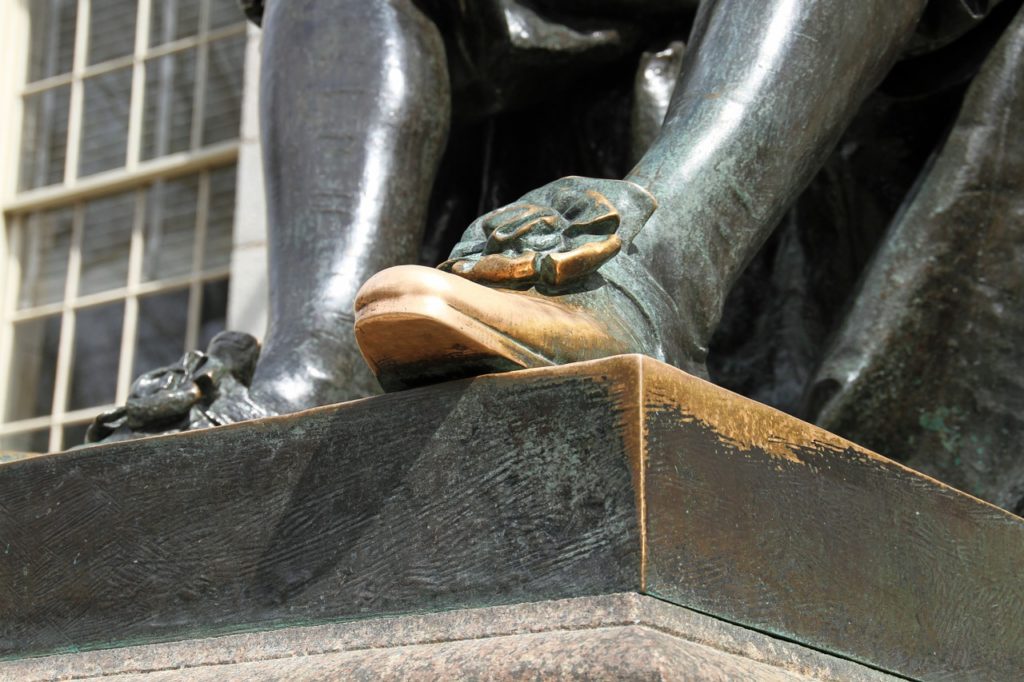
The John Harvard statue is one of the most notable, and arguably the most caressed, object at Harvard University. Tourists believe that rubbing the shiny left foot of the statue will bring them good luck.
Educate yourself. Don’t rub the foot, and there’s an even-more compelling reason than Coronavirus to avoid it. Harvard students have their own tradition: They urinate on the statue before they complete their studies at Harvard. The memorial is a giant fire hydrant for humans.
The university staff cleans the statue when it fails the sniff test.
6. Testudo the Terrapin, College Park, Md.
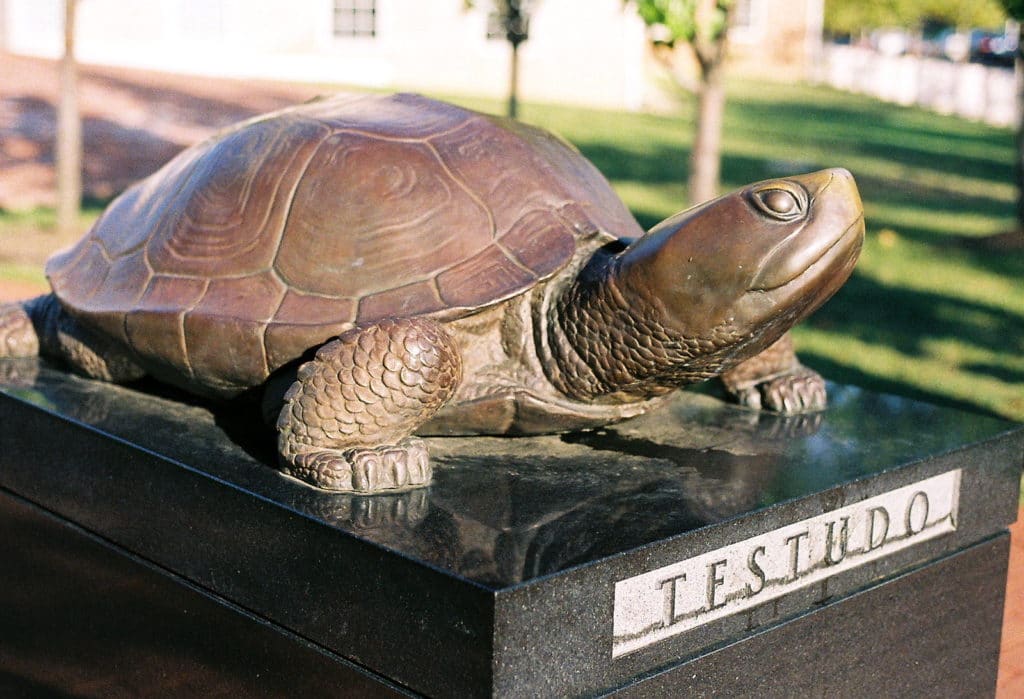
Another university-based statue that gets the rub is “Testudo,” the diamondback turtle mascot of the University of Maryland in College Park. The statue was placed in 1933 at Richie Coliseum, and remained there until it was “kidnapped” by rival school, Hopkins University, in 1947. It stayed hidden until 1949, when it was returned to the university. The sculpture was filled with concrete to prevent more kidnappings. People rub its nose and even leave offerings. Testudo is believed to help pass exams and prevent parking tickets.
7. Robert Wadlow, Alton, Ill.
At 8-feet, 11-inches tall, Robert Pershing Wadlow, earned his moniker “The World’s Tallest Man.” He worked as a salesman for a shoe company, but his feet literally were killing him at age of 22. After marching in an Independence Day parade, Wadlow developed a blister, and died from the infection. The statue is located at Southern Illinois University’s Dental School, where his shoes and his hands are burnished regularly.
8. Jim the Wonder Dog, Marshall, Mo.
We all think our dogs are the world’s smartest. But in 2017, the Missouri State Senate officially designated a Llewellin setter named Jim as “Missouri’s Wonder Dog.” Jim was owned by Sam Van Arsdale in the 1930s, and claimed that Jim could not only understand English, but predict the future. He turned down offers from movie companies and dog food manufacturers, and when Jim died in 1937, he was interred just outside the fence at Ridge Park Cemetery in Marshall. In 1999, the city opened Jim the Wonder Dog Memorial Park, with a statue commemorating the dog. The park’s website encourages visitors to give Jim a gentle pat on the nose. Good dog. Bad idea — for now.
9. Paul Bunyan, Akeley, Minn.
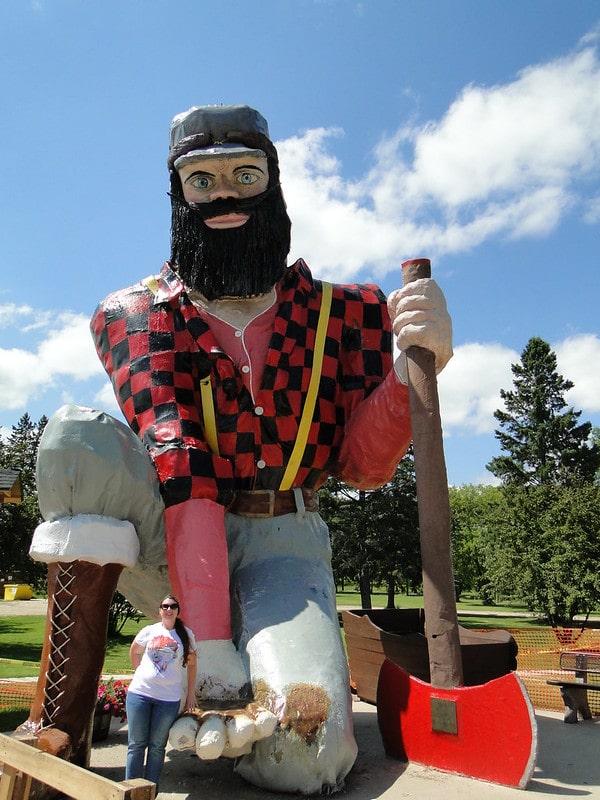
Paul Bunyan and his blue ox named Babe are familiar childhood literary characters. The country is dotted with statues that memorialize the giant lumberjack. But in Akeley, Minn., known as the “birthplace of Paul Bunyan,” a statue of the flannel-clad man kneels and leans against his axe. His outstretched hand welcomes visitors to sit and snap a photo. Thousands have seated themselves — and touched — that fiberglass hand. And who knows how often a lumberjack uses hand sanitizer?
10. Rachel The Pig, Pikes Place Market, Seattle
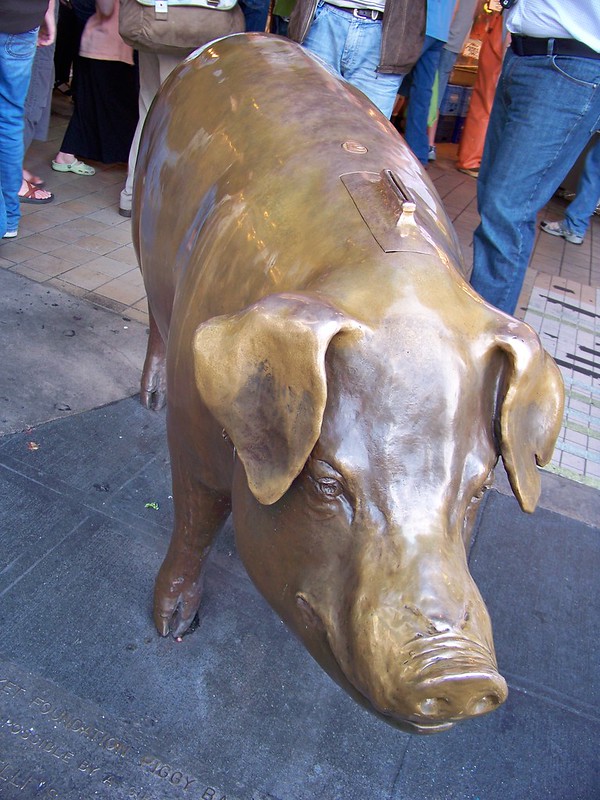
This beloved bronze has stood under the recognizable Public Market center sign of Pike Place Market since 1986. A cousin piggy named Billie can be found on the Marketfront Plaza. Rachel and Billie are kissed, ridden, and hugged by children and adults. As a result, their bodies are gently burnished all over. Visitors are encouraged to show them some love by dropping their spare change into the slots on their backs. Both Rachel and Billie are giant piggy banks, and they collect around $25,000 per year in spare change, which benefits Market Foundation social services.
Other Surfaces to Avoid
One of the problems with coronavirus is that much remains unknown about it. The World Health Organization states that the virus can be transferred from person to person, when an infected person sneezes, coughs or exhales. The virus might land on solid surfaces, and the U.S. Centers for Disease Control and Prevention states other people may touch the surface and transfer the virus when they touch their mouth, nose or eyes.
The best course of action is to avoid going into public places if you don’t need to do so. Put a hold on visiting places where people gather, including:
- Children’s play places and playgrounds.
- Museums and galleries.
- Concerts.
- Public restrooms and airplane bathrooms.
- Hospitals and other medical facilities such as nursing homes.
- Public transportation.
- Video arcades, gaming venues, and casinos.
- Fitness centers.
Kids are likely to touch more surfaces than adults and are less likely to be aware of it. Instead of bringing them along on your errands, curb the contagion by leaving them at home.

